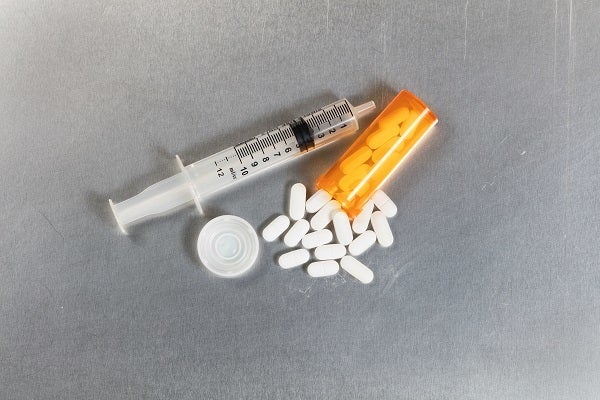
I know someone who has suffered from an addiction to opiates. Like many addicts, his reliance on narcotics began innocently. He was in a car accident that left him with severe and lingering pain in his neck, for which his physician prescribed painkillers. Over time, he built up a tolerance for the drugs, needed increasing doses, and became dependent on them to get through the day. His doctor was not complicit; to get the drugs he wanted, my friend doctor-shopped at first and then began getting the drugs illegally. His addiction cost him just about everything: his wife, his children, his job, and his home. He even became indebted to organized crime after borrowing money to keep financing his addiction. Scary stuff.
My friend’s story is not unique. Nearly every day, I read another article or heartbreaking story about the opioid crisis. The human toll is staggering: deaths related to heroin in New York State are at an all-time high, and overdoses from prescription opioids have nearly quadrupled over 10 years. Some addicts commit criminal offenses to support their habits. You hear about the revolving door of incarceration: people go to jail, don’t get treatment, get released, and end up being rearrested for petty theft or possession or some other infraction. They get caught in the criminal justice system when they really need health and recovery services.
The epidemic creates a financial burden as well; annual health care expenditures related to opioid abuse total $1.2 billion in New York State and $25 billion nationally. In many places, it’s cheaper to buy a hit of heroin than a six-pack of beer. Treatment can be unavailable or unaffordable. As the future of the Affordable Care Act grows more uncertain and cuts to Medicaid loom, I fear that coverage for substance use treatment could erode further.
Communities throughout New York State and the country are struggling with this epidemic, and there are no simple fixes. The problem is so pervasive, with so many causes, that the solutions will need to be multi-faceted and far-reaching, using both prevention and treatment approaches.
The good news is that we are seeing leadership and action at the State and local levels; government, health care providers, emergency responders, pharmacists, insurers, the criminal justice system, law enforcement, and advocates are all playing a role.
In his 2017 State of the State, Governor Cuomo laid out a number of measures to address the opioid epidemic. These include expanding the use of opioid prescription monitoring in emergency rooms, eliminating barriers to outpatient as well as inpatient treatment, and helping young people in recovery finish school while maintaining their sobriety. These new efforts build on previous legislation enacted in New York to limit opioid prescriptions and to expand insurance coverage for and access to substance use treatment.
We’re also seeing action at the local level to prevent and treat opioid addiction and its consequences. Albany has been a national leader in developing a formal, coordinated public health approach to drug policy, using a model called LEAD (Law Enforcement Assisted Diversion). Instead of making an arrest for low-level drug charges, police officers, prosecutors, and defense attorneys work together to divert individuals directly to a case manager, who then facilitates access to a comprehensive network of services for drug addiction, alcoholism, mental illness, and other health-related issues.
LEAD is spreading to other parts of New York: Staten Island, Brooklyn, Buffalo, Ithaca, Orange County, Rochester, and Essex County are all exploring or implementing diversion programs. It’s a very forward-thinking and progressive approach that unites diverse constituencies in exciting ways.
In the North Country of New York, Essex County’s public health department has established the Essex County Heroin and Opioid (ECHO) Prevention Coalition, a multiagency collaboration to prevent and reduce heroin and opiate use and addiction. A top priority for the coalition is to launch a screening, brief intervention, and referral to treatment (SBIRT) program in the region. The approach has been found to combat substance use disorders, reduce health care costs, decrease the severity of drug and alcohol use, and reduce risk of trauma.
And just yesterday in New York City, Mayor de Blasio committed $38 million annually to reduce opioid overdose deaths by 35% over the next five years. The City has been focused on combating the epidemic through a mix of initiatives focused on both prevention (including education, counseling, public awareness campaigns, and public health surveillance) and treatment (including expanding access to naloxone—which can reverse an overdose immediately—and buprenorphine, which treats opioid addiction).
The efforts underway across New York State to tackle the opioid epidemic seem to be paying off. Opioid prescriptions are decreasing, from more than 11.2 million in 2013 to 10.1 million in 2016. More than 1,800 pharmacies throughout the State offer life-saving naloxone without a prescription. And diversion programs that emphasize treatment over incarceration are spreading to more communities.
Things are looking up for my friend who struggled with opioid addiction too. He is in recovery and is putting his life back together. He successfully completed a rehab program and is committed to maintaining his sobriety. He and his family have reunited. He is optimistic about his future. As common as his addiction was, his happy ending shouldn’t be uncommon either. Policymakers and providers have joined forces to beat back the opiate epidemic. Working together, we can ensure that fewer people start on the path to addiction; and that those who do, get the care and services they need to recover, to stay healthy, and to get another chance.